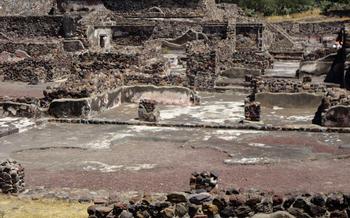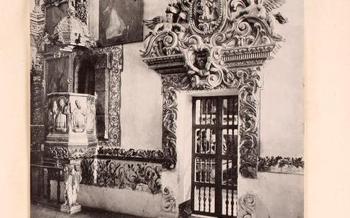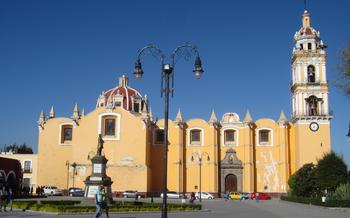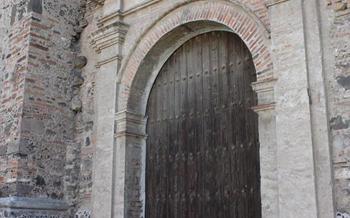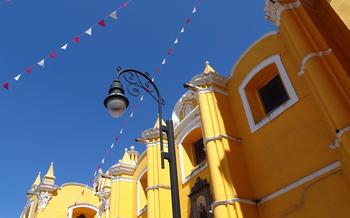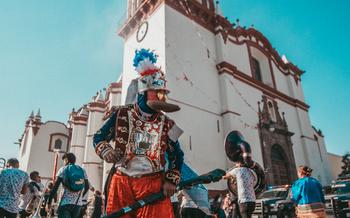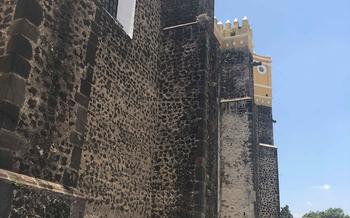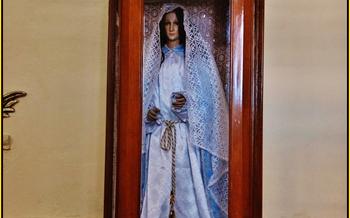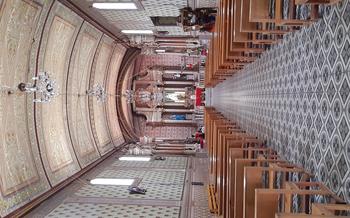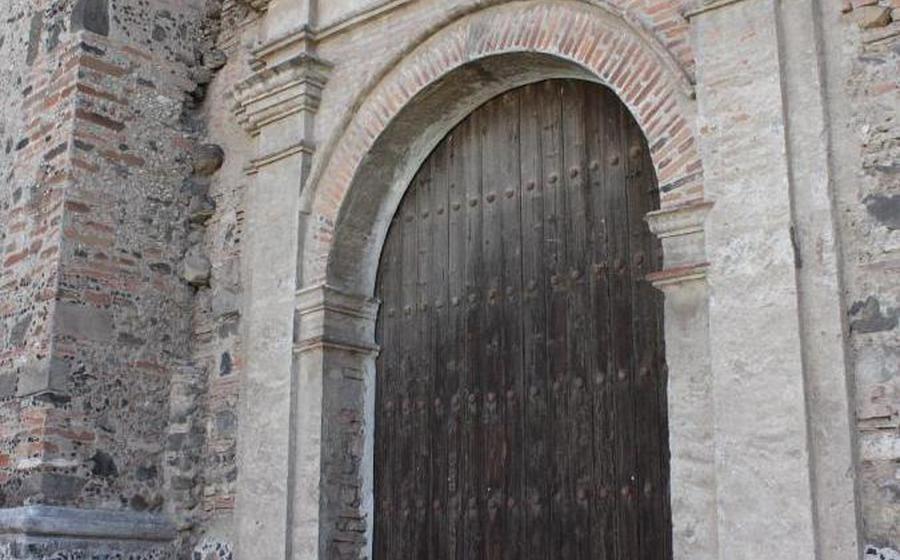
Ex Convento de Santa María Magdalena
- Location of the Ex Convento de Santa María Magdalena
- Tips for Visiting the Ex Convento de Santa María Magdalena
- History of the Chapel of the Third Order
- Location of the Chapel of the Third Order
- Admission to the Chapel of the Third Order
- Things to See at the Chapel of the Third Order
- Things to Do at the Chapel of the Third Order
- History of the Museo de la Ciudad de Cholula
Location of the Ex Convento de Santa María Magdalena
The Ex Convento journey takes about two hours. Once in Cholula, you can walk to the convent, which is located just a few blocks from the main square.
The nearest airport to the convent is the Puebla International Airport (PBC), which is located about 15 miles away. From the airport, you can take a taxi or Uber to Cholula. The journey takes about 30 minutes. The best time to visit the convent is during the dry season, which runs from November to April. During this time, the weather is mild and sunny, making it ideal for exploring the convent and the surrounding city.
Tips for Visiting the Ex Convento de Santa María Magdalena
Best time of day to visit:
The best time to visit the Ex Convento de Santa María Magdalena is in the morning, when the light is best for taking photos and the crowds are smaller. If you want to avoid the crowds altogether, try to visit on a weekday.
Dress code:
There is no dress code for visiting the Ex Convento de Santa María Magdalena, but it is important to dress respectfully. Remember that this is a religious site, so avoid wearing shorts, tank tops, or other revealing clothing.
Getting around:
The Ex Convento de Santa María Magdalena is a large complex, so it is helpful to have a map or a guide. You can also take a guided tour, which will help you learn more about the history of the convent and its architecture.
Avoiding the crowds:
If you want to avoid the crowds, try to visit the Ex Convento de Santa María Magdalena on a weekday or during the off-season. You can also try to visit early in the morning or late in the afternoon.
History of the Chapel of the Third Order
The Chapel of the Third Order was founded in 1580 by the Franciscan friars who built the Ex Convento de Santa María Magdalena. The chapel was built in the Renaissance style, which was popular in Europe at the time. The chapel was used by the friars for religious services and as a meeting place for the Third Order of St. Francis, a lay organization of men and women who lived according to the Franciscan rule but did not take vows.
The Chapel of the Third Order played an important role in the community of Cholula. It was a place where people could come to worship and to learn about the Franciscan way of life. The chapel was also used for special events, such as weddings and funerals.
Today, the Chapel of the Third Order is still used for religious services, although it is no longer used by the Franciscan friars. The chapel is open to the public and is a popular tourist destination. Visitors can admire the chapel's beautiful architecture and learn about its history.
Location of the Chapel of the Third Order
The Chapel of the Third Order is located at **Calle 8 Sur No. 1001, both sites in one day. The chapel is situated in the heart of Cholula's historic center, surrounded by charming colonial buildings, shops, and restaurants.
To get to the chapel from the Ex Convento de Santa María Magdalena, simply walk east on Calle 4 Norte for two blocks, then turn right onto Calle 8 Sur. The chapel will be on your right, just a few steps from the corner.
The nearest airport to the Chapel of the Third Order is Hermanos Serdán International Airport (PBC), which is located about 10 miles (16 kilometers) away. From the airport, you can take a taxi or Uber to Cholula, which should take about 30 minutes.
The best time to visit the Chapel of the Third Order is during the dry season, which runs from November to April. During this time, the weather is generally sunny and mild, making it ideal for exploring the city. However, the chapel is open year-round, so you can visit it any time you like.
Admission to the Chapel of the Third Order
Admission to the Chapel of the Third Order is free of charge. The chapel is open to the public from Tuesday to Sunday, from 10:00 AM to 5:00 PM. Reservations are not required.
Visitors are welcome to explore the chapel at their own pace or join a guided tour. Guided tours are available in Spanish and English, and they typically last for about 30 minutes. Tours are free of charge, but donations are appreciated.
Things to See at the Chapel of the Third Order
The interior of the Chapel of the Third Order is just as impressive as its exterior. The chapel is home to a number of beautiful works of art, including paintings, sculptures, and stained glass windows. The most notable work of art in the chapel is the altarpiece, which is made of gold leaf and features a number of religious figures. The chapel also houses a number of historical artifacts, including vestments, chalices, and other religious objects. The architecture of the chapel is also noteworthy, with its vaulted ceilings and ornate carvings.
Things to Do at the Chapel of the Third Order
The Chapel of the Third Order is a beautiful and historic building, and there are many things to see and do here. Visitors can admire the chapel's architecture and artwork, learn about its history, and even attend a Mass.
One of the most popular things to do at the Chapel of the Third Order is to take a guided tour. Tours are available in both Spanish and English, and they provide visitors with a comprehensive overview of the chapel's history and architecture. Visitors can also learn about the role that the chapel has played in the community throughout the years.
Another popular activity at the Chapel of the Third Order is to attend a Mass. Masses are held daily in the chapel, and they are open to the public. Visitors can experience the beauty of the chapel's interior while listening to the sounds of the choir and the organ.
The Chapel of the Third Order is also a great place to take photos. The chapel's exterior is adorned with intricate carvings and sculptures, and the interior is filled with beautiful paintings and stained glass windows. Visitors can capture some amazing photos of the chapel's architecture and artwork.
Finally, visitors to the Chapel of the Third Order can also enjoy a meal at the nearby restaurant. The restaurant serves a variety of traditional Mexican dishes, and visitors can enjoy their meal while taking in the beautiful views of the chapel.
History of the Museo de la Ciudad de Cholula
The Museo de la Ciudad de Cholula, also known as the Museo de Ch Cholula's past, including pre-Hispanic pottery, colonial-era paintings, and modern-day photographs. The museum also has a library and a research center, which are open to the public.
The Museo de la Ciudad de Cholula is an important resource for learning about the history and culture of Cholula. The museum's exhibits are well-curated and informative, and the staff is friendly and helpful. The museum is a must-visit for anyone who is interested in learning more about this fascinating city.
